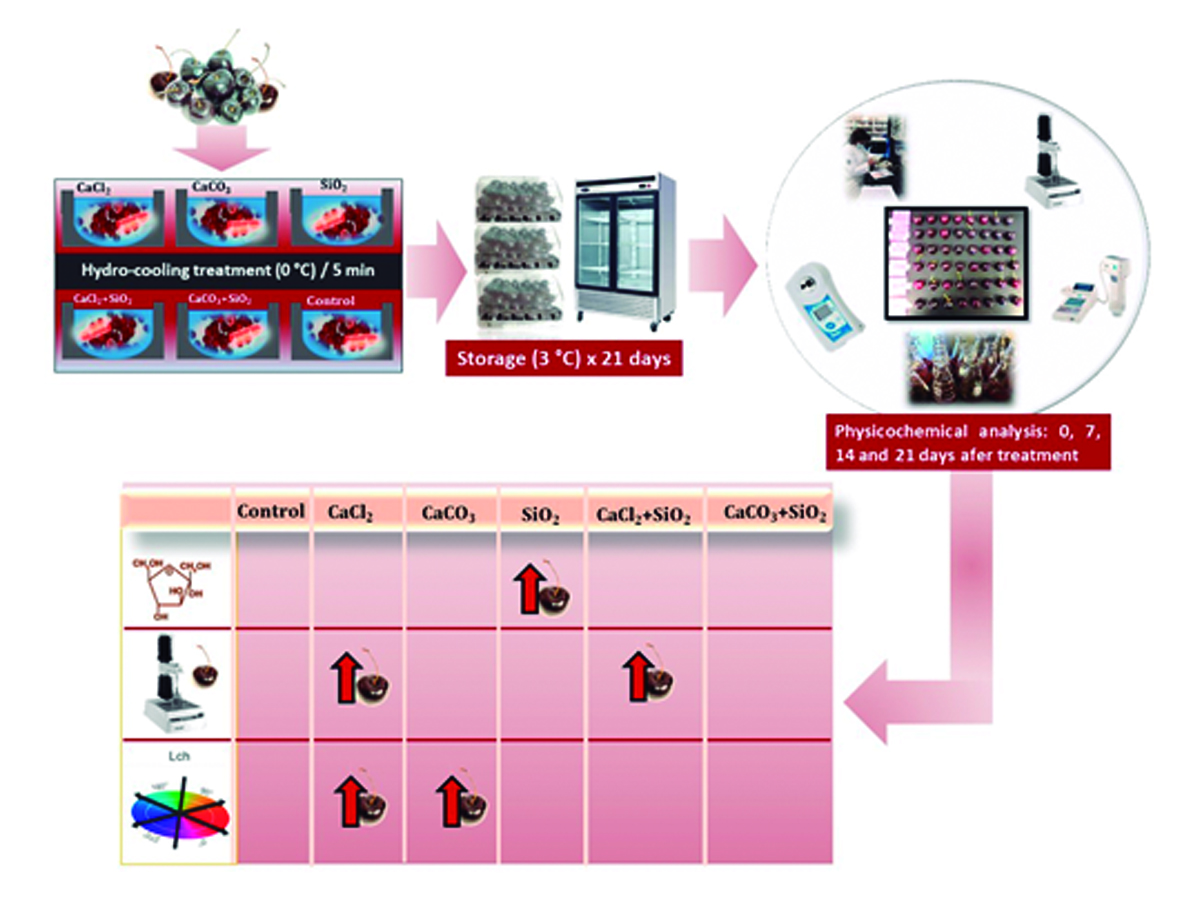Effects of postharvest treatments based on calcium and silicon in hydro-cooling on the basic quality attributes of ʹBingʹ sweet cherries (Prunus avium L.) during storage
DOI:
https://doi.org/10.48162/rev.39.142Palabras clave:
Prunus avium, firmeza del fruto, vida útil, fruto no climatérico, sólidos solubles totales, color de la pielResumen

Ca2+ and Si2+ treatments confer resistance to biotic and abiotic stresses in many fruits. In sweet cherries, Ca2+ improves shelf life extension during storage, but only CaCl2 is used. On the other hand, there is scarce information on CaCO3 as a source of Ca2+, which has shown increased firmness in berries. This study evaluated different treatments based on Ca2+ (CaCl2 and CaCO3) + Si2+ (SiO2) alone and combined with immersion in hydro-cooling (0°C) on physicochemical characteristics of ʹBingʹ sweet cherries (Prunus avium L.) during storage at low temperature (4°C). Results demonstrate that alone or combined treatments (Ca2+ and Si2+) with hydro-cooling significantly affected skin and flesh color of sweet cherries. Chromaticity (C*) was increased in treated fruits, indicating an intense red color, especially in those cherries treated with CaCl2. Furthermore, firmness was increased during storage in treatments with Ca2+, while SiO2 treatment increased total soluble solids (TSS). Therefore, combined treatments of Ca2+ and Si2+ with hydro-cooling might be a promising postharvest strategy to maintain desirable physicochemical characteristics in sweet cherries during low-temperature storage.
Highlights:
- Treatments based on Ca2+ (CaCl2 and CaCO3) and Si2+ (SiO2) alone and combined in hydro-cooled solutions extend storage capacity at low temperatures.
- Ca2+ and Si2+ treatments intensify the skin color of sweet cherries.
- CaCO3 as a source of Ca2+, has shown increased firmness in berries.
- Ca2+ and Si2+ treatments combined with hydro-cooling maintain physicochemical characteristics in sweet cherries during storage.

Descargas
Publicado
Número
Sección
Licencia
Derechos de autor 2018 Revista de la Facultad de Ciencias Agrarias UNCuyo

Esta obra está bajo una licencia internacional Creative Commons Reconocimiento-NoComercial-CompartirIgual 3.0.
Aquellos autores/as que tengan publicaciones con esta revista, aceptan las Políticas Editoriales.



